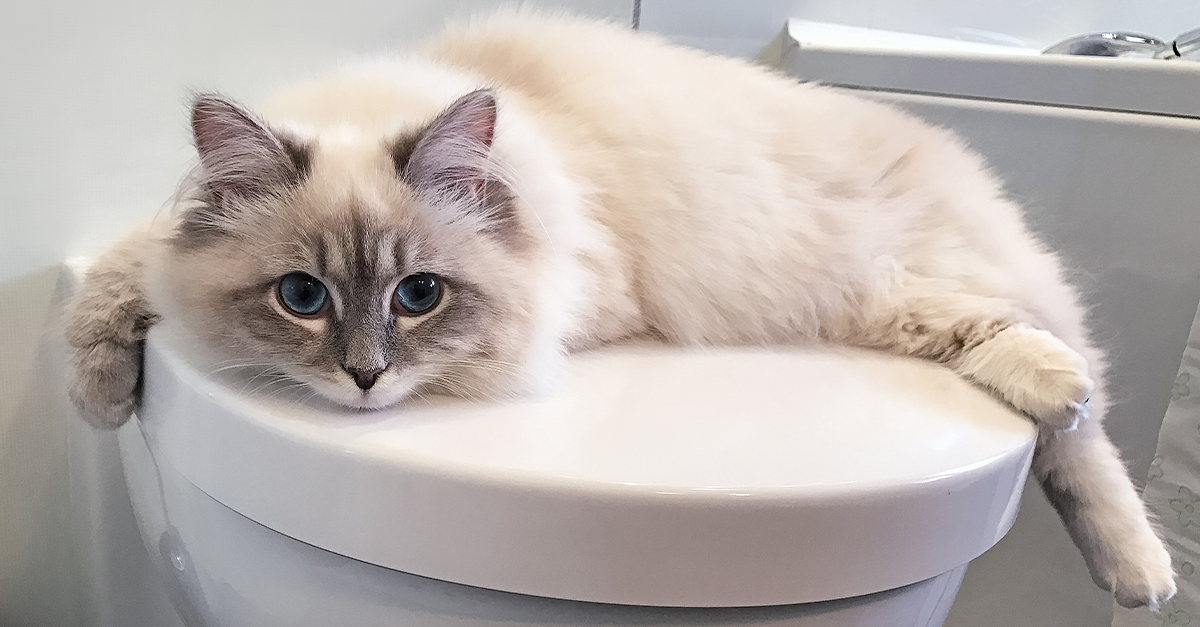Why Flushing Cat Poop Down Your Toilet Can Cause Problems - Recommendations for Safe Disposal
Why Flushing Cat Poop Down Your Toilet Can Cause Problems - Recommendations for Safe Disposal
Blog Article
This post which follows relating to How to Dispose of Cat Poop and Litter Without Plastic Bags is highly entertaining. You should give it a look.

Introduction
As pet cat owners, it's vital to bear in mind exactly how we deal with our feline close friends' waste. While it may appear convenient to purge cat poop down the toilet, this technique can have harmful effects for both the environment and human wellness.
Environmental Impact
Purging pet cat poop introduces unsafe pathogens and bloodsuckers right into the supply of water, posturing a significant danger to water environments. These impurities can negatively influence marine life and compromise water top quality.
Health Risks
In addition to ecological issues, purging feline waste can additionally pose health and wellness threats to human beings. Cat feces may consist of Toxoplasma gondii, a bloodsucker that can cause toxoplasmosis-- a potentially extreme illness, particularly for expecting females and people with weakened immune systems.
Alternatives to Flushing
Thankfully, there are more secure and much more accountable ways to deal with feline poop. Take into consideration the adhering to alternatives:
1. Scoop and Dispose in Trash
The most common method of throwing away pet cat poop is to scoop it right into an eco-friendly bag and toss it in the trash. Make certain to make use of a committed clutter inside story and dispose of the waste promptly.
2. Usage Biodegradable Litter
Opt for biodegradable cat litter made from products such as corn or wheat. These clutters are eco-friendly and can be securely thrown away in the garbage.
3. Hide in the Yard
If you have a lawn, think about burying cat waste in a designated area far from vegetable gardens and water sources. Make certain to dig deep adequate to stop contamination of groundwater.
4. Set Up a Pet Waste Disposal System
Purchase an animal waste disposal system specifically designed for pet cat waste. These systems utilize enzymes to break down the waste, minimizing smell and environmental effect.
Verdict
Liable pet dog possession expands past giving food and sanctuary-- it additionally includes appropriate waste management. By avoiding purging cat poop down the toilet and going with different disposal techniques, we can minimize our ecological footprint and protect human wellness.
Why You Should NEVER Flush Cat Poop (and/or Litter) Down Your Toilet
The Problem with Litter
The main function of litter is to solidify and adhere to your cat’s waste. While this makes litter excellent for collecting cat poop and urine, it’s also the exact property that makes it a nightmare when flushed down the toilet.
Cat litter can and will clog pipes. There is non-clumping litter, but it’s still quite heavy and can build up in pipes. This is true even of supposed “flushable litter.”
The problems only compound when the litter is already clumped into cat waste. Toilet paper is among the more flushable things, and even too much of that will clog a toilet.
The Problem with Cat Poop
Sewers and septic systems are designed with human waste in mind. The microbes that help break down human waste don’t work on cat waste. Additionally, cat poop plays host to the parasite Toxoplasma gondii.
When flushed, this parasite can enter the environment in places it was never meant to, posing a risk to pregnant women, their unborn children, and other people with compromised immune systems. While it might not seem possible, flushing cat poop can indeed introduce this parasite to the public water supply.
These reasons are why, even if you’ve trained your cat to go on the toilet and flush, which is possible, it’s still not a good idea. Also, pregnant women and the immunocompromised shouldn’t change litter, either.
How to Handle Litter
The best way to handle litter is to simply put it in a plastic bag and place it in the trash. Avoiding environmental risks and possible plumbing damage is worth the extra effort.
You can also invest in devices that seal away your cat’s waste in a separate compartment, so you don’t have to change the litter nearly as often. They’re also safer for pet owners because they limit the possibility of Toxoplasma gondii exposure.
Disposing of litter the old-fashioned way will ensure you won’t have to worry about any issues that flushing the waste can potentially cause.
Take Care of Clogged Pipes with Stephens Plumbing, Heating & Air Conditioning
The reasons you should never flush cat poop down your toilet are numerous, but sometimes the inevitable happens despite your best efforts.
Stephens Plumbing, Heating & Air Conditioning is ready to help if you’re experiencing litter-blocked plumbing. Whether you need us in an emergency or want to schedule regular maintenance, we’re here for you.
https://www.stephensplumbing.net/bathroom-plumbing/never-flush-cat-poop-down-your-toilet/

I am just very fascinated with How to Dispose of Cat Poop and Litter Without Plastic Bags and I really hope you enjoyed reading the blog post. Are you aware of somebody who is fascinated about the subject? Take a moment to share it. Thanks for your time. Visit again soon.
Estimating Report this page